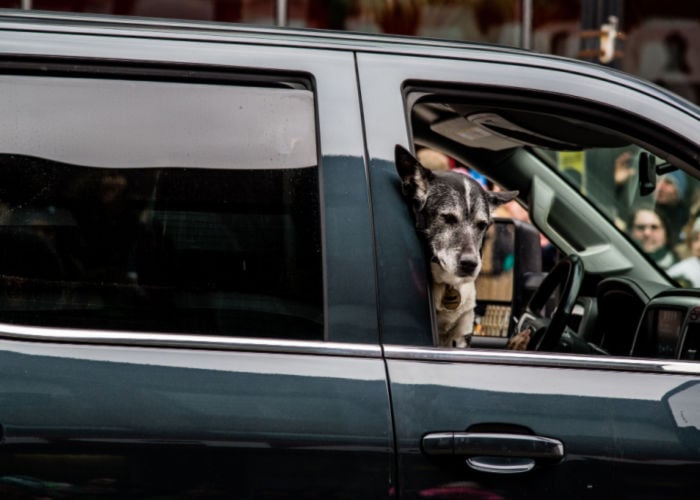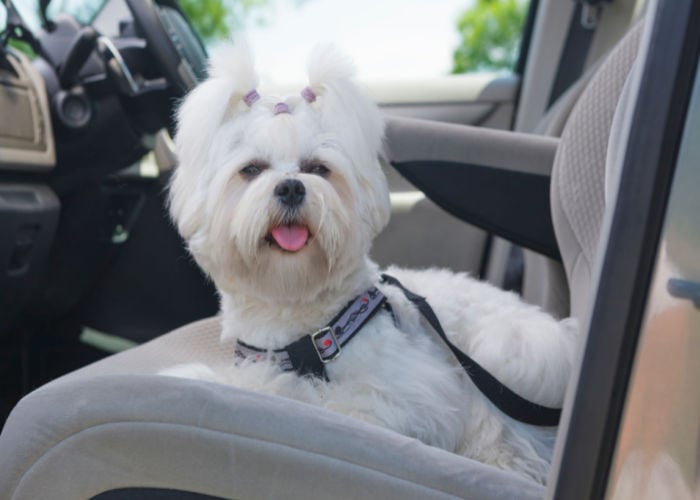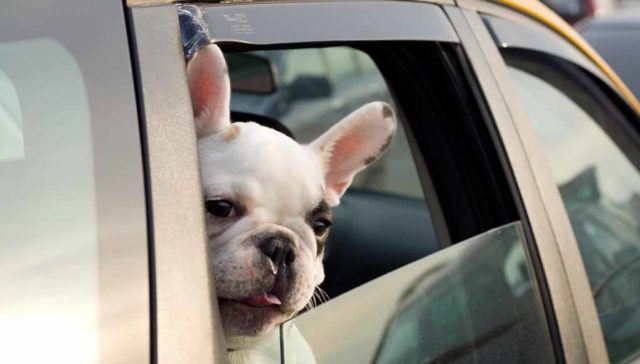
Table of Contents
Virtually every pet owner will need to travel with our dogs at some point, which isn't the most straightforward task when you don't own a vehicle. If you've ever wondered about the options for ridesharing with pets, you're not alone.
Many people live in areas that offer plenty of public transportation options, including ridesharing options for trips off the bus routes.
You need to know everything about getting around with a pup in tow, whether you're looking to travel by taxi or other popular ridesharing options.
Ridesharing With Pets and Taxi Companies
If you're hoping to travel around by taxi with your dog, it's always good to call ahead of time to see if they allow animals in the car. Many companies and drivers will hold individual rules regarding pets, complicating matters further.
To avoid stress or confusion at the time of travel, always call ahead and ask the company about any rules for traveling with pets. Ask for a driver who's okay with a furry passenger and offers all dog details before booking.
Relevant information includes the size of your dog, its breed, and whether the dog will be in a carrier during transport. Always bring a towel, pad, or blanket for your dog to sit on during the drive.
The driver will appreciate any additional steps to safeguard the vehicle, especially if the staff are sub-contractors instead of a fleet of cars.
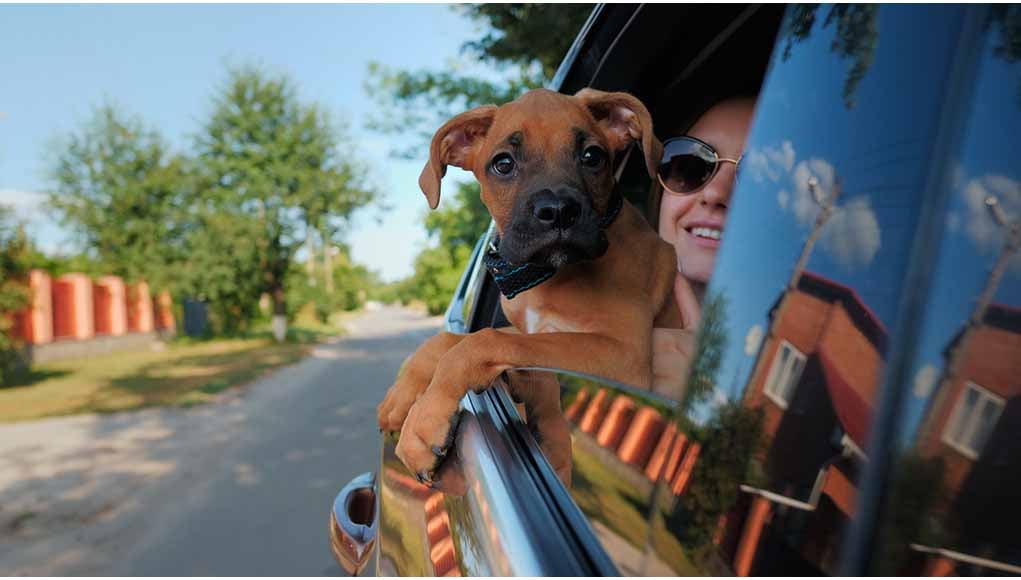
As a popular transportation method, many ridesharing apps have drivers who are independent contractors.
This status allows the driver to use their vehicle to make money on the side while still maintaining control over the hours and schedule.
As many drivers use their cars to transport customers, it's up to each driver's discretion on whether they allow pets in the vehicle.
Unfortunately, this prevents customers from calling the company directly to ask whether it's permissible.
After ordering a ride from the ridesharing application, wait until your request is assigned a driver. Immediately contact them to determine whether your dog is welcome to tag along.
While most drivers are willing to accommodate pets, calling the driver ahead of time is always a courteous option.
As drivers aren't reimbursed for their gas or mileage, contacting the driver immediately helps minimize the financial burden of the driver while keeping the trip ideal for everyone.
Should the matched driver not feel comfortable with your dog in the car, cancel the ride immediately and request a new match. If the app charges a cancellation fee for the previous passage, contact the company directly and explain the situation.
The company will most likely reimburse any costs or expenses for requesting a new driver.
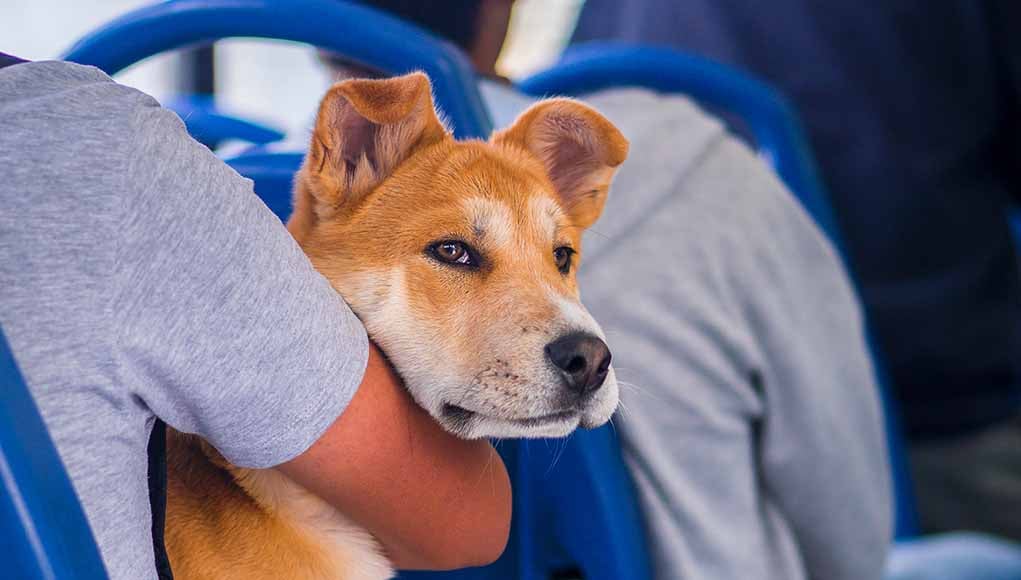
Public Transportation for Owners and Their Pets
Most significant cities allow the transportation of pets in their vehicles, provided the owner has the dog restrained in the car.
It's essential to contact the city before boarding, as many jurisdictions will hold independent terms and conditions for pets on board.
For example, Orlando requires all dogs on public transit, provided they are in a carrier that fits on your lap. Seattle allows all dogs on transit, with individual decision-making by the driver.
Should the driver determine your dog is smelly, aggressive, or unruly, they can refuse access to the vehicle.
Finally, smaller towns will require an independent screening before boarding. To help get you started, here are a few questions to ask the local transit authority:
Are only service animals allowed?
It's essential to recognize that service dogs and therapy animals are not the same things.
Every form of public transportation must legally allow service dogs in the vehicle (whether subway, train, or bus). Having a letter from your therapist may not count for specific transit systems.
What costs are there to bring my dog on board?
Major transit systems don't require an additional ticket for animals, but smaller or rural companies might request it. It's always a good idea to ask the company ahead of time to be sure.
Are there time restrictions for boarding public transit with my dog?
Several transit systems prevent animals during peak rush hours and service times. Ensure that the system you're using doesn't hold time restrictions when you want to use it.
Did you have any breed or size restrictions?
Make sure your pup is welcome on the public transit service before using it by calling ahead of time to determine any requirements for boarding.
Depending on the location and time of day, some more extensive public transportation systems will only allow dogs of specific sizes to board.
These restrictions may include size or breed, prohibiting certain pets from being admitted.
Ridesharing and Pets on Airport Shuttle Services
As people continue to fly and navigate with their pets in tow, arriving at the airport seems like a common step for most travelers.
For those traveling with pets, it's not always a clear-cut step in your itinerary. If you're planning on using an airport shuttle to get to and from the airport, it's always wise to confirm accommodations ahead of time for your dog.
Many different companies embrace the need for therapy dogs and the previous requirement to accommodate service animals in their vehicles.
While contacting the transportation company directly is always good, it's safe to assume most shuttles allow animals in travel-approved carriers.
If you're trying to travel with your dog on a leash, let the company know ahead of time and ask whether muzzling is required for safety reasons.
It's also important to note that many shuttle services will require an additional fee for transporting your pet around town, particularly to and from airports.
The extra cost will often cover the other detailing and cleaning services needed when you've left the vehicle (especially for dogs that shed or have dirty feet).
Make sure you budget this expense into your travel expenses.
Limousine Service With Your Pet
When looking to travel in style, booking a limo rental might seem like the ultimate luxury. Limos offer plenty of space, making it the ultimate experience for people wanting to hop around town.
Unfortunately, the added expense of a high-quality vehicle means an additional risk for limo companies should a pet cause damage or ruin something within the car.
The other risk of damage that may occur by pets is steep, especially when animals aren't kept in travel carriers on the trip.
Not all limo companies are willing to accept pets within the vehicle for traveling. Before booking a limo rental, always talk to the receptionist about their pet policies.
Be ready to offer a safety deposit in the event of accidental damage and restrain your pet according to the company's specifications. Always use a pre-authorization for animals in the limo at booking.
Ridesharing With Pets: Getting Your Dog Ready
If you've confirmed the pet policies on the ridesharing program, the next step includes preparing your pet for travel.
There's nothing worse than getting on crowded public transit and stressing your dog out. Stressed dogs act unpredictably, from vocalizing to having accidents.
Here's everything you'll need to get your pup ready for their next public transit adventure:
Socialize Your Dog Thoroughly
Bringing a dog onto a crowded bus when they're not used to strangers is stressful and anxiety-inducing for animals.
Create a healthy environment for your dog by adequately socializing your pup with humans before their big trip.
Get them used to being around other people, sounds, and animals so they don't panic when confined to a small space.
Socializing is helpful for all animals, whether they're using a rideshare program or going for a walk in the neighborhood.
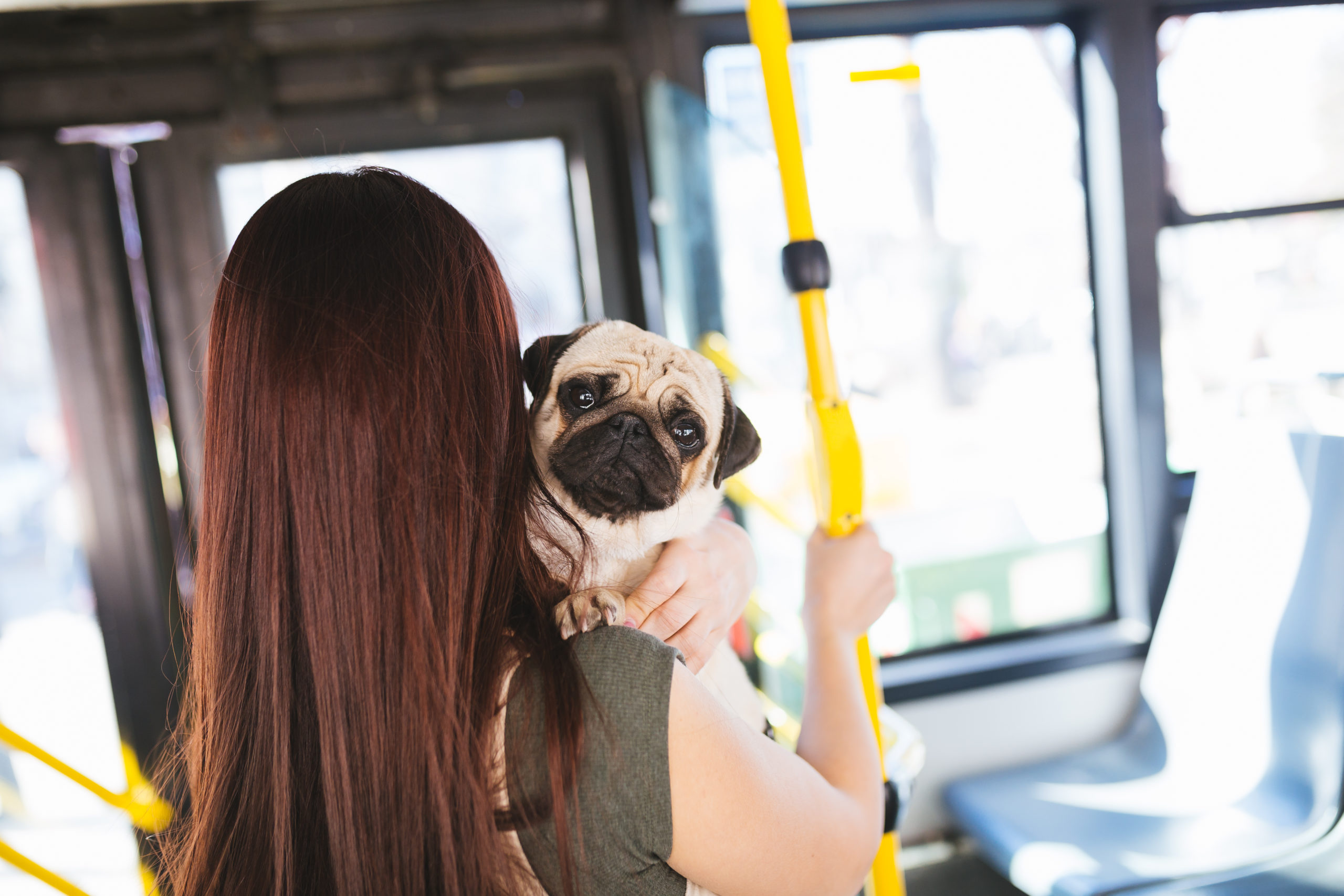
Get All Paperwork Ready
Depending on the transit authority, some locations will require copies of all immunization records and records before traveling on a public system.
Keep a copy of your dog's recent immunizations and health records available during your trip, especially if you're traveling for long periods. Likewise, always have any equipment for the transit public before boarding.
Before boarding, many systems will require short leashes, carriers, and muzzles for dogs. It's always a good idea to bring clean-up wipes in case of any accidents on the trip.
Remain Courteous with Your Pup
Never allow your dog on the seats or upholstery in a rideshare vehicle (unless sitting in a car).
Your dog should remain between your legs or at your feet during transit. Likewise, you'll want to avoid crowded areas in case of allergies or those afraid of dogs.
Keep others around you comfortable by restricting your dog's movement whenever possible.
Remember, not everyone wants to say hello to your pup, regardless of how cute they are.
Monitor for Motion Sickness Before Public Transit
The only thing worse than a carsick pup is one traveling on public transit. Make sure your dog gets used to traveling, especially when planning long car trips or train rides.
Start with several short trips, building to a longer duration over time.
Bring a Towel or Blanket for the Ride
Although some independent drivers will have a towel or blanket available, it's courteous to bring seat protection when getting into someone else's vehicle.
Pet claws can damage dirty seats, especially when turning corners or getting into the car. Rather than risking a sharp nail claw ripping through leather, it's better to remain cautious and add a barrier.
Likewise, dog hair is difficult to remove from fabric seats, leaving a mess behind for the driver.
Adding a barrier between the seats and your furry companion can help independent drivers maintain their vehicle and limit downtime between passengers. Look for a high-quality dog blanket that can withhold some rough use.
Use a Carrier Whenever Possible
Dog carriers are often safer for everyone, including your pet. If your dog is small enough to fit inside a pet carrier comfortably, it's always good to keep them contained during your ride.
Your dog should be able to lie down comfortably in the pet carrier without being cramped inside.
Look for a travel carrier that is hard plastic with plenty of ventilation. Once you've finished the ride, you can take your pet out of the carrier and let him stretch his legs.
Tire Your Pet Out Before Traveling
A tired dog is an ideal passenger. Give your pup plenty of exercise before getting into a ridesharing vehicle.
Your dog will likely act excited before transit, and a good, long walk can calm down any jitters. It also gives your pet the option to relieve himself before the trip.
Always Offer a Decent Tip
Ridesharing drivers don't have to allow your pet to travel with you but often appreciate a passenger with a pet.
As they're doing you a solid favor, it's always a nice gesture to tip well after the ride ends. Tipping will show appreciation, help the driver maintain, and encourage future rides with fur babies in tow.
Remember: Traveling with Your Dog is a Privilege
While many different ridesharing programs allow dogs, it's ultimately up to the driver or company to determine your eligibility.
Any transportation regulations or guidelines don't protect pets unless you have a service animal. Remain polite and respectful when traveling with your dog, especially if you face any issues.
There are many reasons for denying a dog on public transit, whether personal preference or unsafe traveling conditions. If your dog is cautious or anxious around other people, consider leaving the pup at home.
It's always better to err on the side of caution when exposing your dog to potentially stressful situations; a frightened dog is more likely to nip, growl, or flee from the environment.
There's nothing worse than trying to travel somewhere new and losing your pet because they're terrified.
By double-checking different ridesharing programs before your trip, you'll limit the likelihood of any problems while traveling, whether using public transit, a ridesharing program, or a limo to get around.


